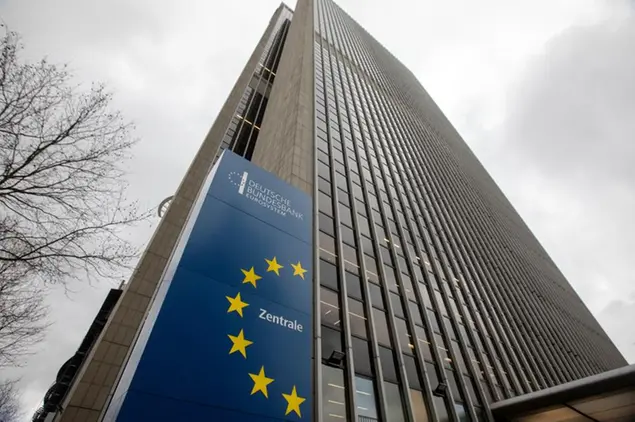PHOTO
The European Central Bank held borrowing costs steady Thursday, giving policymakers more time to assess progress on inflation after last month's first interest rate cut in five years.
The ECB's governing council heads into the summer break leaving the benchmark deposit rate at 3.75 percent, after lowering it from a record four percent at the June meeting.
The pause was widely expected after ECB president Christine Lagarde said policymakers would need time to gather sufficient data before deciding the next move.
The ECB will keep rates "sufficiently restrictive for as long as necessary" to ensure inflation remains on track to return to the two percent target, the Frankfurt institution said in a statement.
The bank reiterated that policymakers would make decisions based on "a data-dependent and meeting-by-meeting approach".
Attention now shifts to Lagarde's 1245 GMT press conference, where observers will be listening for clues about a possible rate cut in September, when the ECB will have new growth and inflation forecasts.
"Investors will look for hints on potential moves in September and afterwards," Unicredit economist Marco Valli said.
Eurozone inflation hit a peak of 10.6 percent in 2022 after Russia's war in Ukraine and pandemic-related supply woes pushed prices up, prompting the ECB to launch an aggressive cycle of monetary tightening.
Inflation in the 20-nation currency club has fallen steadily since then, easing to 2.5 percent in June from 2.6 percent in May.
Progress on inflation led the ECB to lower borrowing costs for the first time since 2019 in June, bringing some relief to households and businesses.
Lagarde said in Portugal's Sintra this month that inflation was "heading in the right direction", but cautioned that it would likely be "a bumpy road until the end of 2024".
- Sticky services, high wages -
Policymakers are in particular keeping an eye on core inflation, which strips out volatile food and energy prices, and remained stubbornly high at 2.9 percent in June.
Inflation in the services sector was sticky at 4.1 percent, increasingly becoming a headache for ECB officials.
The ECB is also hoping to see a slowdown in wage growth, which has been elevated as eurozone workers seek salary increases to compensate for higher living costs.
"Stickiness in services prices, fast wage growth and a resilient labour market" all argued "against back-to-back rate reductions", said Unicredit's Valli.
The eurozone economy meanwhile emerged from recession with greater-than-expected growth of 0.3 percent in the first quarter of 2024.
But recent data suggested the recovery "has lost steam" in the second quarter, said ING economist Carsten Brzeski, potentially strengthening the case for another rate cut to bolster economic activity.
Given that the ECB will have more hard data to go on at its next meeting in September, most observers see that as the likeliest time for a second cut.
One further rate reduction is then expected before the end of the year, possibly in December, according to analysts.
- Fed shift, French focus -
September is also when the US Federal Reserve is increasingly expected to begin lowering rates, with confidence growing that US inflation is coming down to target.
Lagarde, a former French finance minister, can also expect to be grilled Thursday about political uncertainty in her home country after snap elections produced a hung parliament.
French central bank chief Francois Villeroy de Galhau last week called for reducing the country's large deficit, amid concerns that increased government spending could push up inflation.
"We expect president Lagarde to be guarded in her responses to direct questions on France," Deutsche Bank economists said in a note.
She is likely to say "that the ECB is attentive to what is happening" and reiterate "that euro area member states have agreed a fiscal framework with which they are expected to comply", they added.
